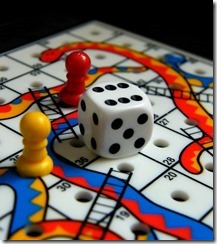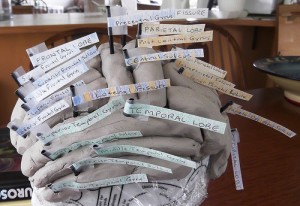
“The part of the brain damaged will determine the physical and cognitive effects.”
A key message reminding us that most often the outcomes of brain injury links to the part of the brain that has been damaged.
It can help to know a bit about the functions of the brain and what happens when damage to brain structures occurs.
How much understanding about the brain is needed?
Well maybe not as much as a neuroscientist!
If the neuroscientist level of understanding is the Master Chef, the knowledge most of us need is that of a good home cook. We need basic knowledge to be competent and able to work things out.
Below is a brief introduction to help build that “good home cook” knowledge. A look at what can happen when each major structure or lobe of the brain is damaged. It is a general summary, the outcomes will depend on the cause of brain injury and the extent of damage, such as whether damage is global (all of the brain) or localised.
Outcomes of Damage to Brain Structures
If this is all too hard to remember, don’t feel alone even after many years it still gets confusing and some specifics get forgotten. I still have trouble particularly with my left brain and right brain functions!
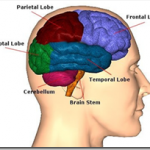 Frontal Lobe
Frontal Lobe
The frontal lobe and the functions of the frontal lobe have already had whole posts devoted to it. It deserves this added attention as many of the changes in behaviour, cognitive functions and social difficulties are caused by changes in the frontal lobe. Like most areas of the brain the outcome will be influenced by the part of the frontal lobe that is affected:
You might see:
[unordered_list style=”green-dot”]
- Inappropriate social behaviour – being unaware of family or cultural traditions.
- Personality changes – a once mild mannered person becomes very talkative and outgoing.
- Memory problems – particularly for movement and motor activities.
- Lack of monitoring of self – blurting out private information to strangers.
- Sequencing – Difficulty putting steps in the right order to complete a task or activity.
- Poor initiation and motivation – Not able to start, or continue a task or activity.
- Poor judgement – Not able to make good decisions and judgements about daily life
- Reduced attention and concentration – Not able to focus on a task and spend the time needed to complete the task.
- Egocentricity – not able to see things from the other person’s position.
- Poor problem solving – Not able to solve problems or not as good at solving problems
- Partial / total paralysis or reduced feeling down opposite side of body.
- Damage to Broca’s Area: difficulty speaking and writing
[/unordered_list]
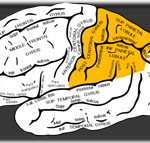
Parietal lobes
The damage that occurs will depend on which parietal lobe (left or right) and where the damage occurs.
There is further useful information on the Centre for Neuroskills website
Generally you might see:
[unordered_list style=”green-dot”]
- Difficulty making sense of the sensory messages coming to the brain
- Neglect: Inability to recognise touch sensation on the opposite side of body
- Agnosia: Inability to recognise familiar objects
- Anomia: Difficulty naming things
- Tingling and altered sensation in parts of the body
- Not knowing meaning of words
- Dyscalculia: Not able to do arithmetic calculations.
[/unordered_list]
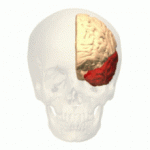
Temporal Lobes
Damage to the temporal lobes can be responsible for the more unusual outcomes of brain injury:
[unordered_list style=”green-dot”]
- Visual Agnosia – Difficulty identifying familiar objects.
- Prosopagnosia: inability to recognise faces
- Temporal lobe epilepsy is a form of epilepsy where seizures are more related to feelings and sensations than physical seizures.
- Emotional changes such as sudden mood swings
- Aggressive behaviour
- Not being able to recall visual information.
- Possible changes in long term memory and there may also be short term memory loss, or changes.
- Damage to temporal lobe is strongly dependent on whether a person is left or right handed:
[/unordered_list]
- Dominant (Left) damage – such as Wernickes area is likely to lead to an inability to understand what is being said. (Wernickes Aphasia)
- Non-dominant (Right) – inability to recognise and appreciate music.
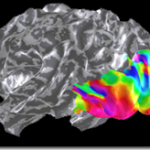 Occipital Lobe
Occipital Lobe
When a lobe is almost completely devoted to sight then you could expect the damage will be predominantly related to aspects of sight.
Yes, that is the Occipital lobe.
There is more though, the trick in understanding damage to the Occipital lobe is that it is not just seeing or vision that can be affected, it includes how we interpret and process what we see.
Outcomes might include:
[unordered_list style=”green-dot”]
- Partial or complete blindness is a potential outcome but so are other less obvious and often more complex aspects of vision.
- Not able to identify colours
- Not able to recognise words
- Difficulty reading and writing
- Visual hallucinations (a false picture) and illusions (an error of perception) may be a feature. Rita Carter in Mapping the Mind describes a man who saw a kind of phantom vision of his wife. “He found that if he walked straight through the phantom it would disappear. Unfortunately this led to some painful encounters with the real thing who was alive and well and living in the house.”
- It can happen that a person loses conscious awareness of visual stimuli. In simple terms this means the sight structures are undamaged but the person cannot see.
[/unordered_list]
Brain Stem
The brain stem featured in Sleeping Beauty or Vegetative State.
When talking about damage to the brain stem it is worth remembering we are talking about a structure about the size of your little finger! A tiny structure that can cause significant outcomes.
Damage to the brain stem can cause damage to the cranial nerves, loss of consciousness, or a change to the state of consciousness. It can also cause disturbances of heart rate, breathing, movement, and touch
If damage to the brain stem is severe it can, and often does result in death. Being responsible for heart and respiratory functions failure of either or both of these organs can occur.
If you are interesting in further reading these amazing biographies of neurosurgeons Charlie Teo in Life In His hands and Fred Epstein in Gifts of Time both of whom operated on this tiny part of our brain. Fred Epstein’s story is particularly poignant as a reknowned Neurosurgeon who later sustained a traumatic brain injury in an accident.
Cerebellum
Damage to the cerebellum can cause difficulty with coordination and involuntary muscle movement. Movements may appear jerky. Known as Ataxia this makes the usual smooth movement appear jerky and uncoordinated. This can create a way of walking that leads to assumptions a person is intoxicated.
It can be that a person is not able to stand upright or walk. There may be a tendency to fall, and poor balance. Eye movements can be flickering.
Limbic System
Damage to the Limbic system may cause:
[unordered_list style=”green-dot”]
- Changed, or inappropriate emotional responses.
- Change to drive and appetites such as not being able to control or monitor eating or drinking.
- Alteration and fluctuations in temperature control.
- Some memory functions are lost and difficulty learning can occur.
- Motivation may be impaired.
[/unordered_list]
Corpus Callosum
The Corpus Callosum is a structure in the brain that has achieved a level of fame over the years. Mainly because of ‘Split Brain Syndrome’, when the Corpus Callosum was cut to prevent severe epilepsy. Damage to the Corpus Callosum interrupts the steady flow of information between the two sides of the brain.
A lack of coordination can occur between left and right brain. It really can create a situation where the left hand does not know what the right hand is doing.
And Finally
Test yourself ! Download the worksheet and see how you go working out damage to brain structures and outcomes of brain injury.
[box type=”download” size=”large” style=”rounded” border=”full”]WORKSHEET Outcomes of Damage to Brain Structures[/box]
Finally. This diagram identifies each lobe and summarises what happens when each of the lobes is damaged. Apologies if you have any difficulty reading it, I could not source a clear copy.

